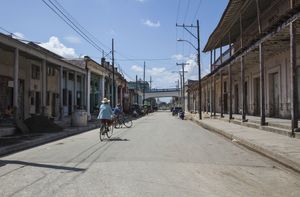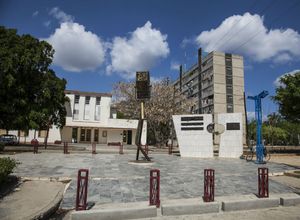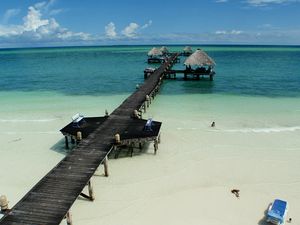

Ciego de Ávila, Cuba
Start your visit to Ciego de Ávila by discovering the culture of its villages and finish it on one of its idyllic beaches.
In the 19th century, immigrants from Haití, Jamaica, Dominican Republic and Barbados arrived to the province, bringing with the a vast amount of cultural curiosities, like the cricket from Baraguá, voodoo from Venezuela, country from Majagua or fireworks from Chambas. Thanks to all these peculiarities, these immigrants made Ciego de Ávila become one of the most interesting provinces of Cuba.
But, it was not until 1975 when this province stopped being a passing-through area to become a place of settlement. This happened when they started to build ambitious tourist resorts in Coco Cay and Guillermo Cay.
In the city of Ciego de Ávila you’ll be able to visit cultural sites like the Simón Reyes Provincial Museum or the Raúl Martínez Provincial Art Gallery, but also to get lost on its beautiful streets and visit its newly-made Boulevard.
If we move to the area of Morón, the atmosphere changes, having the chance to do lots of things, most of them related to nature. Don’t miss visiting Leche Lagoon, La Redonda, Loma de Cunagua Hill or Turiguanó Island. In Turiguanó is located El Pueblo Holandés (The Dutch village), a small village with Dutch architecture in the heart of Cuba.
But no doubt, the strong point of Ciego de Ávila is its hidden paradise. It fine-grained sand and turquoise waters beaches, surrounded by lush vegetation will surprise you. Coco Cay and Guillermo Cay house numerous beach and hotels, being one of the most demanded tourist destinations in the Caribbean.
Interactive map:
Ciego de Ávila
What to see:
- Morón
- Train Station, Morón
- Leche Lagoon
- Laguna La Redonda
- Crocodile Breeding Centre, Morón
- El Boulevard, Ciego de Ávila
- City Park, Ciego de Ávila
- Martí Park, Ciego de Ávila
- Cayo Coco
- Cayo Guillermo
- Delfinario de Cayo Guillermo
- Delfinario de Cayo Coco
- Archipiélago de los Jardines de la Reina
Beaches:
Museums:
Other nearby destinations:
Why "Trip Cuba"?
Trip Cuba is an organization of Cuban agencies whose objectives are:
- ✓ To make Cuba, its culture and its heritage known.
- ✓ To promote sustainable tourism.
- ✓ To support the local economy, prioritizing direct contact with Cuban agencies.
Travel Agencies
If you are a travel agency or tour operator and you are looking forward to any assistance or collaboration to plan trips to Cuba, rely on our extensive experience
Copyright www.TripCuba.Org © - All rights reserved
All our agencies are duly registered in the National Registry of Travel Agencies of the Chamber of Commerce of the Republic of Cuba.









